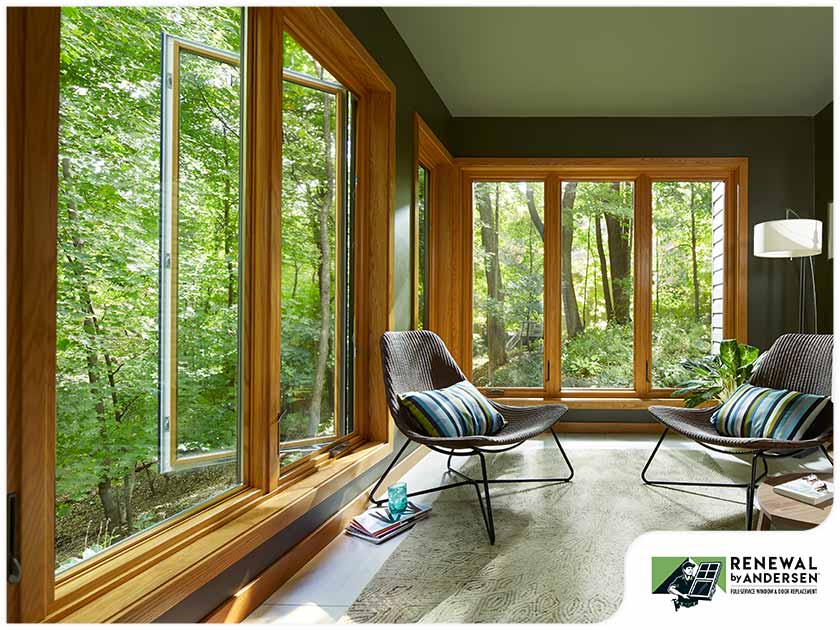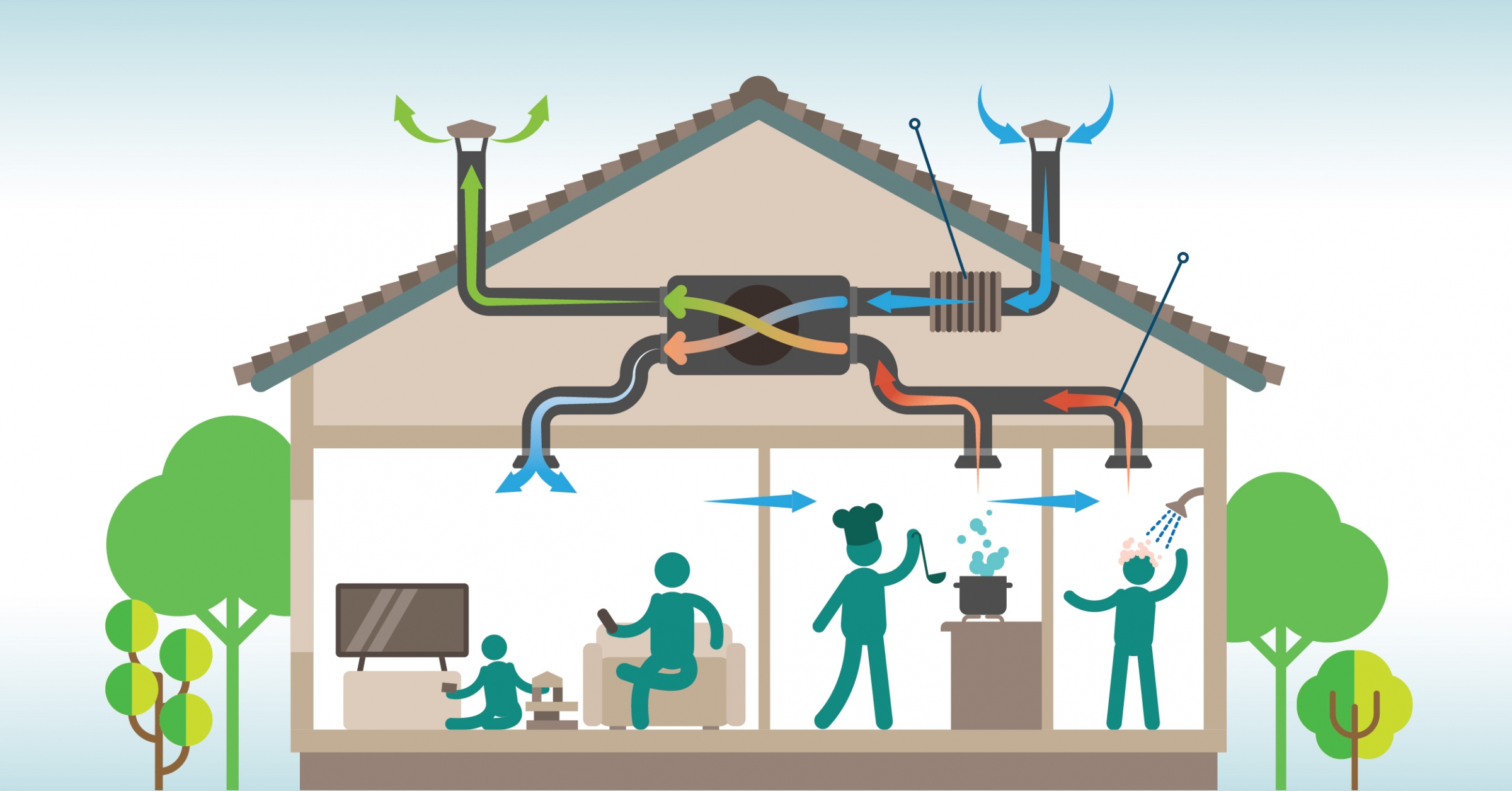Understanding the Importance of Home Air Flow for a Healthier Living Setting
Home air flow plays a vital role in preserving a healthy and balanced living atmosphere. It helps with the exchange of indoor and outside air, which is necessary for enhancing air high quality. Without correct air flow, homes can end up being breeding grounds for irritants and toxins. The consequences of inadequate air circulation can be considerable. This raises the inquiry of exactly how homeowners can successfully implement ventilation techniques to guard their health and well-being. Understanding these approaches is vital.

The Basics of Home Ventilation
Home ventilation functions as a crucial component of indoor air quality and comfort. It entails the procedure of exchanging stale interior air with fresh exterior air, therefore decreasing humidity and controlling temperature. Correct air flow systems can include all-natural techniques, such as open windows and vents, in addition to mechanical systems, such as exhaust fans and air exchangers. Effective home ventilation helps avoid problems like interior mold and mildew growth and the accumulation of unsafe fragments. It also enhances total energy effectiveness, as well-ventilated areas can preserve comfy temperature levels with less dependence on home heating and cooling systems. Understanding the basics of home air flow is crucial for house owners seeking to create a much healthier living atmosphere on their own and their family members.

Common Resources of Indoor Air Air Pollution

Although several may not realize it, interior air pollution can stem from numerous sources within a home. Typical contributors consist of unstable organic substances (VOCs) emitted from paints, solvents, and cleansing items. Family appliances, such as gas ovens and fireplaces, can release dangerous gases like carbon monoxide and nitrogen dioxide. Additionally, mold and mold flourish in damp areas, launching spores that impact air top quality. Animal dander, dust mites, and pollen can collect indoors, further worsening pollution levels. Smoking inside your home generates hazardous chemicals that stick around airborne. Developing products, consisting of asbestos and formaldehyde, can off-gas damaging compounds. Identifying these resources is essential for preserving a healthier interior setting and promoting effective air flow approaches.
Wellness Effects of Poor Air Flow
Indoor air pollution can have significant health and wellness implications, particularly when ventilation is inadequate. Poor air flow can result in the buildup of hazardous pollutants, such as volatile natural substances, mold and mildew, and particle matter. This accumulation may result in respiratory concerns, including asthma, allergic reactions, and persistent obstructive pulmonary condition. People might experience signs and symptoms like migraines, tiredness, and inflammation of the eyes, nose, and throat. Susceptible populaces, such as youngsters and the senior, go to higher danger for extreme wellness impacts. Long-term direct exposure to improperly aerated environments can likewise add to much more severe conditions, including cardiovascular conditions. Making sure appropriate ventilation is crucial for preserving a healthy and balanced living atmosphere and lowering the danger of wellness difficulties linked with indoor air pollution.
Reliable Air Flow Approaches for Your Home
Proper ventilation is vital for maintaining a healthy interior atmosphere, and applying reliable approaches can significantly boost air top quality. Property owners can begin by making certain that exhaust fans are set up in cooking areas and washrooms to get rid of excess dampness and odors. Opening up windows on a regular basis permits fresh air to distribute, particularly during mild weather. Additionally, making use of air cleansers with HEPA filters can assist catch airborne toxins. For homes with heating and cooling systems, preserving a/c systems and altering filters frequently is crucial for peak performance. Integrating natural air flow strategies, such as cross-ventilation, can likewise enhance airflow. Sealing any kind of leaks in doors and windows protects against unwanted drafts, which can interfere with controlled air flow, eventually leading to improved indoor air quality and convenience.
Preserving Optimum Air High Quality Year-Round
To maintain excellent air high quality year-round, home owners need to adopt an aggressive approach to managing their interior setting. Consistently keeping an eye on interior air quality is crucial; this includes checking for contaminants such as dirt, mold, and volatile organic compounds (VOCs) Applying effective ventilation systems, such as exhaust fans and air purifiers, can greatly decrease air-borne impurities. In addition, routine upkeep of a/c systems warranties peak performance and air blood circulation. Homeowners must likewise take into consideration moisture degrees, as too much dampness can bring about mold development. Seasonal changes may necessitate changes in air flow strategies to suit differing outside air high quality. By prioritizing these methods, property owners can create a healthier space, promoting total health for all owners throughout the year.
Often Asked Questions
How Can I Tell if My Home Needs Much Better Ventilation?
To figure out if a home calls for far better air flow, one must observe signs such as persistent humidity, mold and Discover More mildew growth, musty odors, condensation on home windows, or boosted allergy symptoms, showing poor air movement and potentially inadequate interior air top quality.
What Are the Indications of Poor Indoor Air Quality?

Can Houseplants Improve Indoor Air Quality Effectively?
The performance of houseplants in enhancing indoor air top quality is discussed. While some studies suggest they can soak up contaminants and create oxygen, their total effect might be i was reading this very little my site contrasted to appropriate air flow and air filtering systems.
Just how Usually Should I Change My Air Filters?
The regularity of air filter changes usually depends on usage and filter kind. Typically, it is recommended to replace filters every three months, though homes with allergies or pets may need even more constant changes for ideal performance.
Exist Any Certain Air Flow Equipments for Allergy Sufferers?
Several air flow systems, such as HEPA-filtered devices, effectively decrease irritants in the air. Home Ventilation Melbourne. These systems trap pollen, dirt, and pet dog dander, providing allergy patients with a cleaner, healthier indoor atmosphere while taking care of air quality efficiently
It helps with the exchange of exterior and interior air, which is crucial for enhancing air quality. Home ventilation serves as an essential component of interior air top quality and convenience. It entails the procedure of exchanging stale indoor air with fresh outside air, consequently lowering moisture and controlling temperature level. Indoor air pollution can have significant health implications, specifically when air flow is inadequate. Proper ventilation is important for maintaining a healthy and balanced indoor setting, and applying efficient techniques can significantly boost air quality.